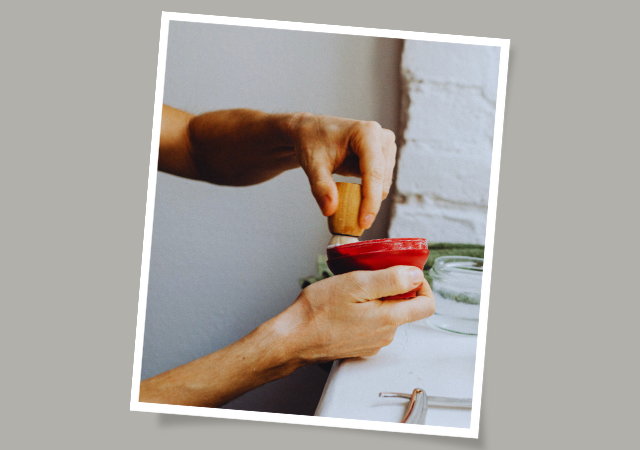Signs That Your Shaving Brush Needs Cleaning: A Guide to Maintaining Your Shaving Gear
Introduction
In the realm of traditional wet shaving, the shaving brush is a quintessential tool that transforms a routine task into a grooming ritual. However, the efficacy of this cherished accessory is contingent on proper care and maintenance. This article, “Signs That Your Shaving Brush Needs Cleaning: A Guide to Maintaining Your Shaving Gear,” delves into the subtle indicators that your shaving brush may be due for a thorough cleanse. From the dwindling quality of lather to the emergence of unpleasant odors, each sign is a silent plea for attention and care.
As we explore these signals, we will also provide a comprehensive guide on how to effectively clean and preserve your shaving brush, ensuring not only a superior shaving experience but also the longevity of this cherished grooming artifact. Elevate your daily ritual by heeding these signs and mastering the art of maintaining your shaving gear.
The Role of a Shaving Brush
Before delving into the signs that your shaving brush may need cleaning, it’s crucial to understand the vital role it plays in the wet shaving process. A good shaving brush, typically made from animal hair or synthetic fibers, serves as a vehicle for creating a rich, creamy lather by whipping air into the shaving cream or soap. This lather, when properly applied, helps soften the facial hair, preparing it for a smooth and comfortable shave.
Beyond its lathering prowess, the shaving brush also aids in exfoliation, removing dead skin cells and promoting a closer shave. The gentle massaging action of the bristles also stimulates blood circulation, contributing to a healthier complexion. To preserve these benefits, regular cleaning is essential.
Signs That Your Shaving Brush Needs Cleaning

A. Loss of Lather Quality
One of the primary indicators that your shaving brush requires attention is a noticeable decline in the quality of lather it produces. Over time, residual soap, shaving cream, and dead skin cells accumulate within the bristles, impeding the brush’s ability to generate a rich and creamy lather. If you find that your once-luxurious lather has become thin, lacks density, or dissipates quickly, it’s a clear sign that your shaving brush needs a thorough cleaning.
B. Unpleasant Odor
Neglecting to clean your shaving brush can lead to the development of unpleasant odors. The combination of trapped moisture and residual grooming products creates an environment conducive to bacterial growth. As these microorganisms proliferate, they emit a distinctive and often disagreeable smell. If your shaving brush carries a less-than-pleasant aroma, it’s time to address the issue to prevent the transfer of these odors onto your skin during the shaving process.
C. Stiff Bristles
The accumulation of soap scum and debris within the bristles can cause them to become stiff and unyielding. A once-soft and pliable shaving brush may transform into a rigid tool, making it challenging to apply lather evenly and comfortably. Stiff bristles not only compromise the tactile pleasure of the shaving experience but also hinder the brush’s ability to effectively lift and prepare facial hair for shaving.
D. Discoloration of Bristles
Another visual cue that your shaving brush requires cleaning is the discoloration of its bristles. Soap residue, hard water minerals, and debris can lead to a gradual change in the color of the bristles. Not only does this affect the aesthetics of the brush, but it may also indicate the presence of substances that could compromise the overall hygiene of your grooming routine.
How to Clean Your Shaving Brush

A. Choosing the Right Cleaning Agent
Cleaning your shaving brush doesn’t have to be a complex task, but it does require the use of the right cleaning agent. Mild, non-abrasive soaps or specialized brush cleaners are recommended to break down accumulated oils, creams, and bacteria without damaging the bristles.
B. Techniques for Thorough Cleaning
- Rinsing: Begin by thoroughly rinsing the brush under warm, running water. This helps remove surface debris and prepares the bristles for a deeper clean.
- Soaking: Create a gentle cleaning solution by mixing a small amount of mild soap or brush cleaner with warm water. Submerge the bristles in the solution, allowing them to soak for a few minutes. Avoid using hot water, as it can damage natural hair bristles.
- Gentle Agitation: Gently agitate the bristles using a back-and-forth or circular motion in the cleaning solution. This helps dislodge any stubborn residue trapped within the bristles.
- Rinsing Again: Rinse the brush thoroughly under running water to remove the cleaning solution and dislodged debris.
- Drying: Shake off excess water and allow the brush to air-dry with the bristles facing downward. This prevents water from collecting at the base of the bristles, reducing the risk of mold and bacteria growth.
Frequency of Cleaning
Determining how often to clean your shaving brush depends on various factors, including the frequency of use, the type of grooming products used, and the hardness of the water in your area. As a general guideline, aim to clean your shaving brush at least once a week for optimal performance and hygiene. However, if you notice any of the aforementioned signs, immediate attention is warranted.
Tips for Maintaining a Clean Shaving Brush
A. Proper Drying Techniques
After each use, it’s crucial to allow your shaving brush to dry thoroughly. Hanging the brush upside down or placing it in a dedicated brush stand with the bristles facing downward promotes proper drainage and prevents water from accumulating at the base of the bristles. This simple practice significantly reduces the risk of mold and bacteria growth.
B. Storage Tips
Store your shaving brush in a well-ventilated area to further facilitate drying between uses. Avoid enclosing it in a tight space or a travel case immediately after shaving, as this can trap moisture and contribute to the development of odors and bacteria.
C. Avoiding Common Mistakes
- Avoid Boiling Water: Boiling water may seem like an effective cleaning method, but it can damage both natural and synthetic bristles. Stick to warm water for cleaning to preserve the integrity of the brush.
- Using Harsh Chemicals: Refrain from using harsh chemicals, such as bleach or strong detergents, as they can damage the bristles and compromise the brush’s performance.
- Regular Inspection: Periodically inspect your shaving brush for any signs of wear, shedding, or deformation. If you notice significant issues, it may be time to consider replacing the brush.
Conclusion
In conclusion, the art of traditional wet shaving relies heavily on the proper care and maintenance of the indispensable shaving brush. This guide has illuminated the subtle yet crucial signs indicating when your cherished grooming tool requires cleaning. From diminished lather quality to unpleasant odors and stiff bristles, these signals serve as a silent plea for attention. By following the provided comprehensive cleaning guide and adopting proactive maintenance tips, enthusiasts can elevate their daily ritual, ensuring not only a superior shaving experience but also the enduring longevity of their treasured shaving gear.

My name is Rohit Vagh and I’m a content writer specializing in fashion and lifestyle. I have three years of experience in this field and have written various articles. My writing style is creative and engaging, and I strive to create content that resonates with my readers. I have a deep passion for fashion and am constantly researching the latest trends and styles to make sure my readers are up to date. I’m excited to continue my career in blogging, and I’m always looking for new opportunities in the fashion and lifestyle space.





